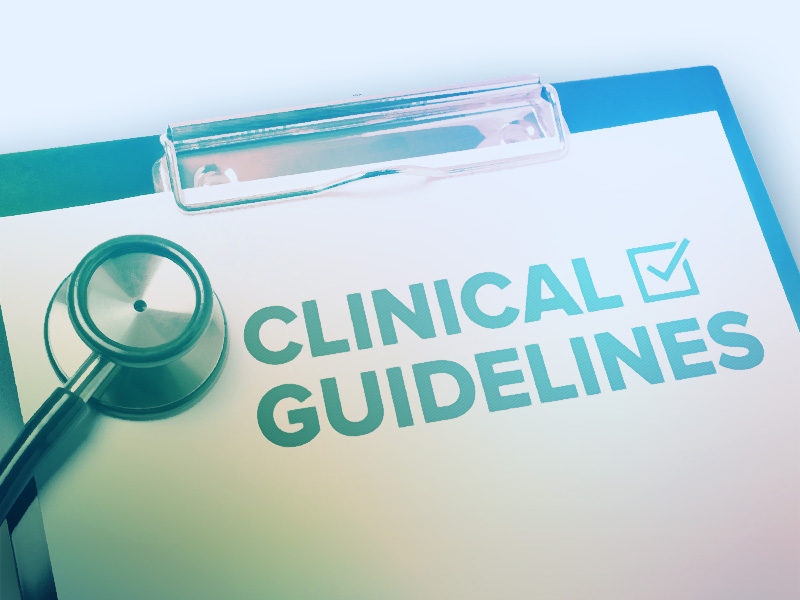John P. Ioannidis is perhaps the world’s leading expert on conflicts of interest and research methods. Recently, he published an article that takes a critical look at the way professional societies, such as the American Heart Association or the American Psychiatric Association, write guidelines for treatment. The article was published in the American Heart Association journal Circulation: Cardiovascular Quality and Outcomes.
Clinical practice guidelines (CPGs) are written to ensure that professionals in a given field are aware of the evidence-based practices that can be delivered to their patients. CPGs (at their best) also promote informed consent by highlighting both the potential benefits and the potential risks of any medical or psychological intervention. Well-done CPGs also include the limitations of current research by ranking particular procedures as being “low evidence.” Ioannidis notes how influential CPGs can be:
“Changes in definition of illness can easily increase overnight by millions the number of people who deserve specialist care. This has been seen repeatedly in conditions as diverse as hypertension, diabetes mellitus, composite cardiovascular risk, depression, rheumatoid arthritis, or gastroesophageal reflux. Similarly, changes in prevention or treatment options may escalate overnight the required cost of care by billions of dollars.”
 Ioannidis critiques the guidelines written by professional societies for a number of reasons. First, he notes the “clan-like group self-citation network” of guideline authors, which damages the integrity of independent research. Industry-funded authors become “opinion leaders” who are then tasked with writing the guidelines that promote the interventions of that industry.
Ioannidis critiques the guidelines written by professional societies for a number of reasons. First, he notes the “clan-like group self-citation network” of guideline authors, which damages the integrity of independent research. Industry-funded authors become “opinion leaders” who are then tasked with writing the guidelines that promote the interventions of that industry.
Hundreds of co-authors make a name for themselves this way, and these guidelines bring a large readership to scientific journals—far more than are brought in by actual research studies. Thus, the guideline authors become “superstars” in the field, and are then able to write “expert reviews” which are cited further. However, very little in this process is evidence-based. Instead, it appears to be a method for creating an exclusive group of industry “insiders” who can influence the practice of medicine.
Ioannidis lists a number of “red flags” that permeate the CPGs written by professional societies.
“The list of red flags includes sponsoring by a professional society with substantial industry funding, conflicts of interest for chairs and panel members, stacking, insufficient methodologist involvement, inadequate external review, and noninclusion of nonphysicians, patients, and community members.”
Ioannidis writes in another accompanying letter that many guidelines purport to include evidence-based practices, while they might more accurately be said to reflect the opinions of professionals in the field.
“When there is no evidence, guidelines should just say that there is no evidence, period,” he writes. “Unfortunately, most current guideline recommendations pertain to questions and situations for which there is a dearth of evidence. As guidelines expand the spectrum of questions to cover, the proportion of questions with no or poor evidence increases. Thus, mere opinions masquerade as authoritative knowledge.”
Although many professional societies have taken steps to reduce financial conflicts of interest in their guideline authors, the other problems remain. Ioannidis suggests that a single patient or community member on a team of a hundred specialists may not be able to have their voice counted in the creation of these guidelines. Thus, he argues that guidelines should be produced by the professional societies, but the team should be composed entirely of methodologists, patients, community members, and even specialists in other fields and that the authors can call upon the specialist experts in the chosen area to provide evidence for their interventions.
If guidelines use this method, according to Ioannidis, the authors can better evaluate the risks and benefits of new interventions, and critically assess the evidence base for their effectiveness. After all, even without financial conflicts of interest, specialist experts in a professional society are inclined to overestimate the benefits of new technologies and interventions in their chosen field. Sometimes these new interventions are incredibly expensive and offer only marginally better outcomes with significant risk. Independent researchers—and community members who would be impacted by new policies—could provide a check against expensive and overestimated interventions.
“Professional societies should consider disentangling their specialists from guidelines and disease definitions and listen to what more impartial stakeholders think about their practices. Professional societies could still fund these efforts without their own experts authoring them.”
****
Ioannidis. J. P. A. (2018). Professional societies should abstain from authorship of guidelines and disease definition statements. Circulation: Cardiovascular Quality and Outcomes, 11(10). https://doi.org/10.1161/CIRCOUTCOMES.118.004889 (Link)
Accompanying letter: https://www.ahajournals.org/doi/pdf/10.1161/CIRCOUTCOMES.118.005205















Thank you for pointing this out. I hope people pay attention!
Report comment
No surprise for me. I stay away from opinion leaders because they’d want me immediately committed if I publicly said I thought B3 was a better idea for “schizophrenic” patients than the most sophisticated psychiatric drugs.
Report comment
YES!!! Thank you, Peter!
This is what I and other lyme advocates have been shouting from the mountaintop. (Though I’m not completely on board with Ioannidis conclusions.) Lyme patients are suffering from inadequate treatment because the Infectious Diseases Society of America caved a long time ago to the insurance industry and wrote treatment guidelines that only cure lyme for those diagnosed in the acute first stage of illness. The problem with this is that while 80% of those diagnosed with Stage 1 illness and treated with 30 days of doxycycline DO recover, the majority of patients aren’t diagnosed early. (And due to gender differences, with women far less likely to have the distinct bullseye rash, for example, a much larger percentage of late Lyme disease patients are women, who already die in greater numbers from diseases that are well studied in men but have different symptoms in women, like heart attacks, for one example.)
These inadequate and pharma/insurance (capitalist) centric guidelines have meant an awful lot of lives derailed by chronic illness and is what led to the US Congress creating the Tick-borne Diseases Working Group. If anyone wants to be even slightly amused, read the Working Group’s first report to congress last October as well as the IDSA’s rebuttal. Heads are exploding. It’s a real gem. Guild interests harm patients and the IDSA will do anything to keep it’s power and control over treatment just as other guilds like the APA and AHA act in similar fashion when they are challenged.
What about other guilds? AHA’s recommendation that almost everyone should be on statins for example? I read an article recently essentially stating that fewer women would die of heart attacks if more were taking cholesterol lowering medications. The author even went so far as to state that over 1000 women would have to take a statin drug to prevent a single heart attack, and that something like 6 fatalities would occur due to drug reactions, but then the author, in defiance of logic, doubled down on the prevention of heart attack and their conclusion was that more women should take the drugs. Now don’t get me wrong, but I think I’ll take my chances on the heart attack. But this number needed to treat, mentioned by Whitaker in his books, is quickly glossed over in these pro-drug treatises, in order to again fund pharma profit and further guild interests.
Contrary to Ioannidis conclusions, my experience as a patient caught in the lyme wars makes me feel like professional societies should not be the ones writing treatment guidelines at all, because it isn’t like there aren’t dissenting professional societies within most of medicine, though maybe a lot of people don’t know that. So which one should get to write the guidelines for any one discipline? The current war between the IDSA and ILADS (the International Lyme and Associated Diseases Society) is just one example of why one organization shouldn’t have complete control. ILADS was formed in response to the IDSA claiming for years that most patients get better and the ones that don’t have post treatment Lyme disease syndrome (rather than still having Lyme disease). In the process, tens (or maybe by now hundreds) of thousands of patients have become completely disabled and many have committed suicide because of how awful this illness can be. And the situation got to this point because until very recently, one guild had total control. (And were aided by the CDC, but that’s a different story, involving the round robin nature of government regulators cycling back and forth between regulatory positions and the corporate world.)
My heart aches for the number of people lost due to these political decisions about treatment made by unaffected people in positions of power. It happens across medicine, not just to psych patients. And that’s a real shame.
Report comment
An example of “mere opinions masquerade as authoritative knowledge,” or worse, actually taking medically known warnings out of the DSM, because the APA has a total disregard and distain of “nonphysicians, patients, and community members:”
The DSM used to include this disclaimer in the “bipolar” definition.
“Note: Manic-like episodes that are clearly caused by somatic antidepressant treatment (e.g., medication, electroconvulsive therapy, light therapy) should not count toward a diagnosis of Bipolar I Disorder.”
This was taken out of the DSM5, after Robert Whitaker pointed out the completely iatrogenic, ADHD drug and antidepressant induced pathways to bipolar misdiagnoses, which resulted in the American only “childhood bipolar epidemic.”
The ADHD drugs should have been added to that disclaimer, rather than the disclaimer being taken out of the DSM5 altogether.
Now our “mental health professionals” believe that creating “bipolar” with the ADHD drugs and antidepressants is totally acceptable behavior, despite it’s iatrogenic – not genetic – etiology.
And the DSM neglects to include these medically known, antipsychotic/neuroleptic induced syndrome in their DSM. Syndrome/toxidrome which mimic both the negative and positive symptoms of schizophrenia.
https://en.wikipedia.org/wiki/Neuroleptic-induced_deficit_syndrome
https://en.wikipedia.org/wiki/Toxidrome
I’m quite certain that if those who profit from making people sick with the psychiatric drugs were not the authors of the psychiatric guidelines, and truthful information about the harms of the psychiatric drugs was actually printed in the psychiatric guidelines, we could significantly decrease the burden of “mental illness” in our society. But, obviously, that is the opposite of the goal of today’s psychiatrists, because it is not in their best financial interests.
Report comment
This is as obvious as not letting Kraft and Kellog’s create the food pyramid for nutritionists
Report comment
Thank you for writing this. I assume you have not seen my “Diagnosisgate” article about how Allen Frances the very year after his DSM-IV was published (so that he was the world’s most powerful psychiatrist) secretly joined with two other psychiatrists to earn about half a million dollars from Janssen Pharmaceuticals, a division of the evil Johnson & Johnson (the company that knowingly sold baby powder filled with talc and asbestos, which caused deaths due to ovarian cancer and heaven knows what else), to produce a “practice guideline” that would help Janssen promote the extremely dangerous drug Risperdal. You can see the article at http://www.oa.uottawa.ca/journals/aporia/articles/2015_01/commentary.pdf
Report comment
Dr. Caplan’s game-changing article “Diagnosisgate” is an eye-opener. When I discovered it years ago, I was ecstatic.
Allen Frances embodies the comprehensive ‘sell-out’ of the psychiatric industry. He’s still smarting all these years later and that’s after utilizing a long list of media to whine about being misunderstood and struggle to repair his destroyed reputation and credibility with anyone who will still bother to read about it.
Phil Hickey, PhD dissects this ‘issue’ in an excellent article in 6/2015 “Behaviorism and Mental Health” and after examining both sides, suggests that Frances, minus a character check and an enormous transfusion of humility, should “exit the stage”. Unfortunately, he can’t bring himself to leave until his ‘restoration tour’ is successful…or, in a word, never.
This is how his massive, derelict influence directly affected a life……
beginning with a bipolar 1/SMI ‘lifelong’ diagnosis in 2004, the result of Frances’ expansion of criteria in his DSM-IV causing the tragic ‘bipolar gold-rush’. I was stressing over financials and couldn’t sleep. The psychiatrist ‘diagnosed’ me in 20 minutes, dosed me with Seroquel, and cashed her $65,000 check from pharma, primarily Astra-Zeneca-makers of Seroquel. (ProPublica, “Dollars for Docs”)…. Neuroleptic Malignant Syndrome #1.
Frances’ subsequent shilling for Johnson & Johnson influenced Risperdal being prescribed to me from a PA who could barely speak English and understood even less, in the state BH system years later.
I developed tardive dyskinesia in both eyes. He was annoyed but finally yanked me off of it, causing a ‘spin out’ followed by Lamicatal which caused Neuroleptic Malignant Syndrome (#2)-hospital, more Lamictal over my objections, ananphylaxis-hospital, and the ensuing withdrawal cacophony and pain, rebound, and 22-hr/day violent dizziness and physical decompensation for 4.5 months.
As a single person, with no family, I faced certain state institutionalization; losing my sad, ‘rebuilt’ life 9 years after the initial diagnosis had stripped me of a great one, and plunged me into bankruptcy and worse.
The happy ending was defined by my ferocious fight against this sh*t-show and subsequent 2-year exit from the industry, replete with safely guided withdrawal off of all drugs and paperwork changing my ‘lifelong’ diagnosis.
I had lost 11 terror and pain-filled years to Dr. France and his diagnostic criteria, drug promotions and payoffs, as the “the world’s most powerful psychiatrist”…and his industry.
When my first essay was published on Dr. David Healy’s RxISK.org, July-August 2018, in 4-parts…I contacted Dr. Frances to alert him to it, carefully referencing his significant ‘contribution’ to my life.
He assumed I was complimenting him and quickly responded “Krista, glad to be of help”.
I’m a big fan of irony.
My ‘special relationship’ with him over the years has taught me to…. 1) always operate from a defensive crouch in any doctor’s appointment forever….and 2) “Character is destiny”.
Thanks, Allen.
But especially… to YOU, Dr. Caplan, for fully exposing him to the light.
Report comment